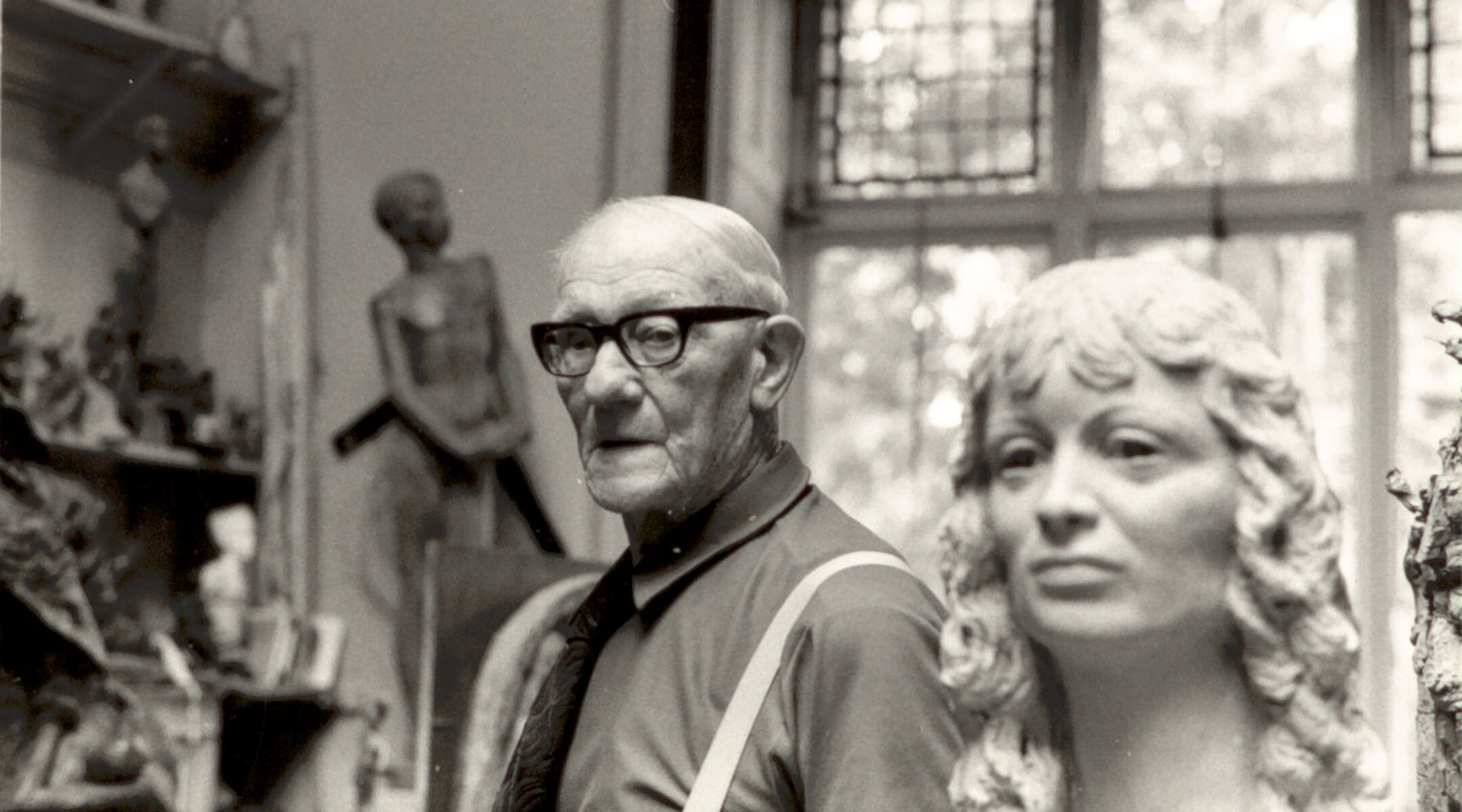(JTA) — Fred Kormis, a German-Jewish artist whose life and work spanned two world wars, created Britain’s first memorial to victims of Nazi persecution — but his name has been largely forgotten.
Kormis’ memorial will be united with many of his other sculptures and prints in an upcoming exhibition at London’s Wiener Holocaust Library, dedicated to shedding light on the little-known artist. The display, which also marks the reopening of the Wiener Library’s gallery after a months-long renovation, will run from Sept. 20 through Feb. 6, 2025.
Kormis’ works trace the upheavals that haunted his life. Born Fritz Kormis in Frankfurt in 1894, he had just won a scholarship to the Frankfurt Art School when World War I erupted. He was conscripted into the Austrian army, wounded and captured on the Eastern Front. He spent the next four years in a prisoner-of-war camp in Siberia.
Kormis continued his art in confinement, including a collection of woodcut prints shown in the exhibition. He managed to preserve those prints — mainly portraits of other prisoners — even as he escaped Siberia in 1920 and made his way back to Frankfurt.
In Weimar Germany, he was gaining renown as a portrait sculptor when his life imploded again with the rise of the Nazi Party. Though he was not religiously observant and his name did not clearly indicate Jewish heritage, Kormis felt compelled to reveal he was a Jew, according to the Wiener Library’s senior curator Barbara Warnock.
“Partly, it was an ethical question for him to reveal himself to be Jewish,” Warnock told the Jewish Telegraphic Agency. “Also, his wife Rachel Sender came from an Orthodox Jewish family and her sister Sidonie, known as Toni, was a politician in Weimar Germany and was known to be Jewish — so I think another motivation was solidarity with the wider Sender family.”
Kormis’ art was labeled “degenerate” and pulled from galleries while he and his wife fled the country. In 1934, the relatively impoverished couple arrived in London to rebuild their lives. It was not the last time Kormis would start his career over — during World War II, an air raid destroyed his studio and most of the work he had produced in Britain.
The repeated destruction of Kormis’ art is partly to blame for his little-known name, said Warnock. But the churn of loss that marked his life did not stop him from working, with a decades-long focus — ever since his days as a prisoner of war — on capturing and memorializing humans in captivity.

The Fred Kormis Statues in London’s Gladstone Park depict concentration camp prisoners in various poses, as seen June 25, 2024. (Courtesy Adam Soller Photography)
That preoccupation intensified as he learned about the Nazi concentration camps, and he struggled continuously with what he viewed as the impossible task of artistically representing the Holocaust. His efforts culminated in 1969 with a set of five sculptures in London’s Gladstone Park, a memorial to “prisoners of war and victims of concentration camps” between 1914 and 1945.
The memorial depicts five prisoners, four seated and bound and a fifth standing with his gaze thrown up to the sky. Kormis said these men represented phases of his experience in captivity: the stupor after being captured, longing for freedom, fighting despair, losing hope and finding it again. He also observed that many others never emerged from despair.
The memorial, housed in a park far from the city’s center, predated Britain’s first official Holocaust memorial by more than a decade. The Hyde Park Holocaust Memorial opened in a public garden near Buckingham Palace in 1983, following an intense public debate about the site’s appropriateness, and has been the location of official ceremonies annually since.
Now, British lawmakers are locked in debate over the planned creation of a more expansive memorial to be located near the seat of government; officials say they are committed to carrying out the plan, but their critics have challenged the memorial’s design and location.
Warnock hopes that the Wiener Library’s showcase of Kormis’ memorial and his other works — along with personal records, correspondence and photos from his life stored in the library’s archive — will bring public attention to his art and its reflection of 20th-century history.
In line with the pattern of Kormis’ life, his memorial arrived perhaps at the wrong time — a period when traditions of memorializing the Holocaust were less developed and broadly recognized, muting the impact of his work.
“When you talk to people who live in the local area, which I have done a bit, they’re all very aware of it,” said Warnock. “But I don’t think it had a huge impact, and then any impact that it did have has been rather forgotten. So people often aren’t aware that it’s there and that it is a memorial to victims of concentration camps.”
JTA has documented Jewish history in real-time for over a century. Keep our journalism strong by joining us in supporting independent, award-winning reporting.






